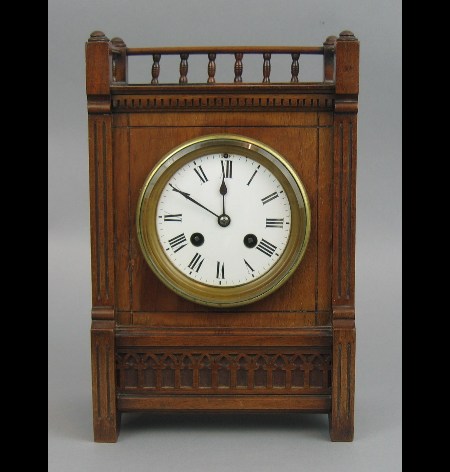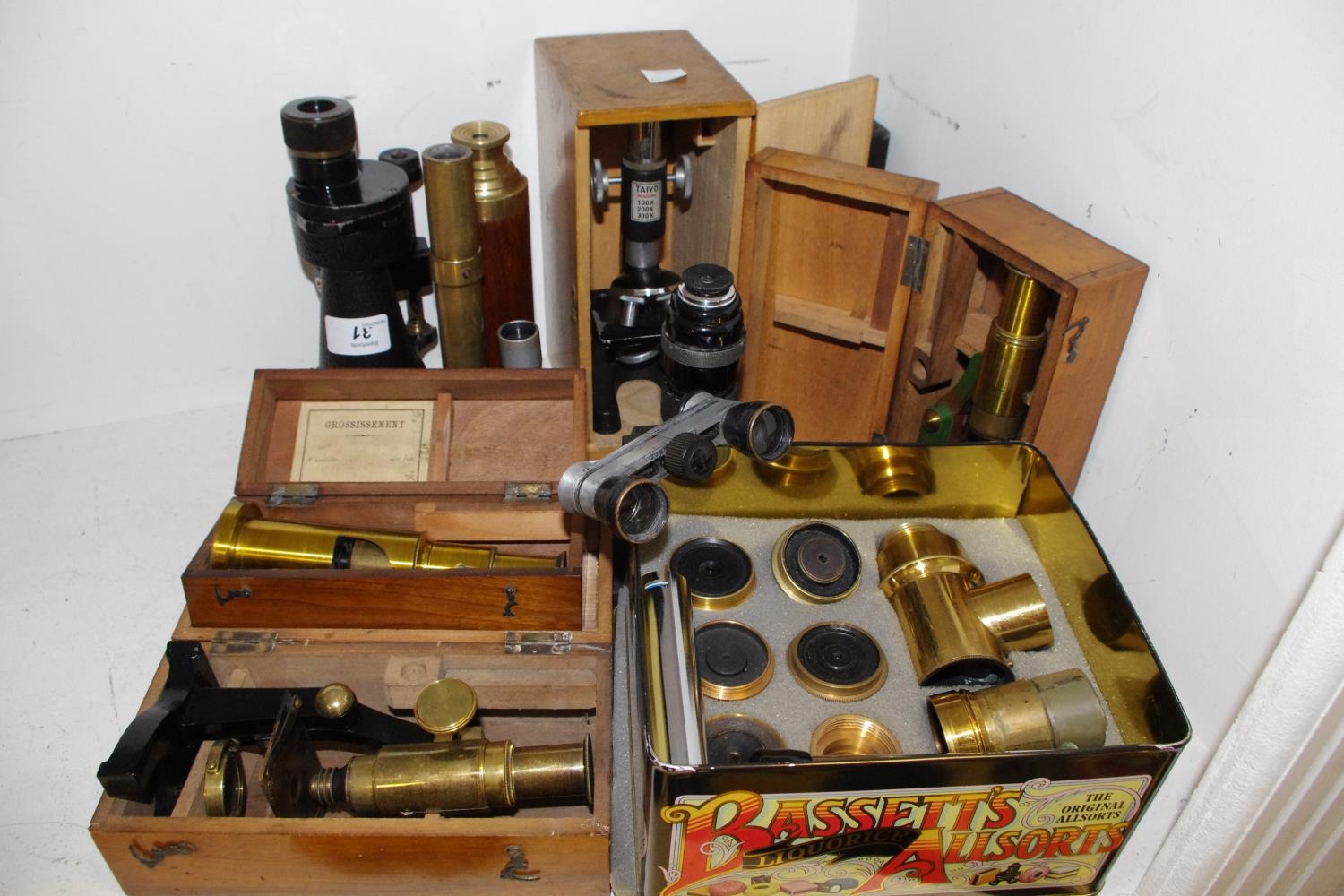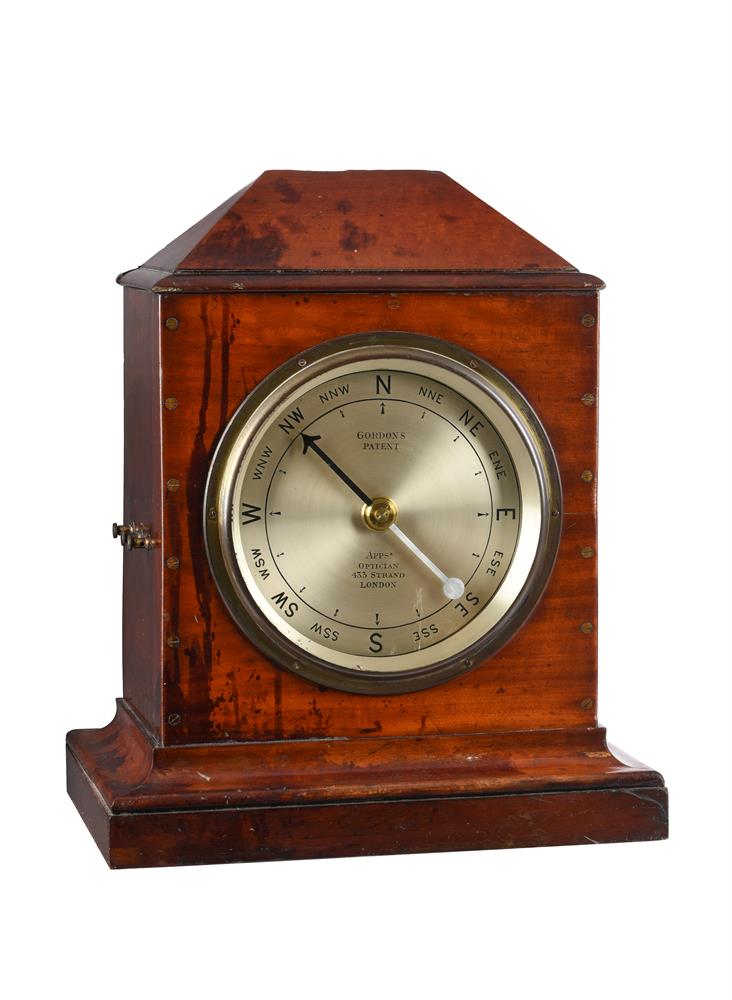A VICTORIAN MAHOGANY CASED SMALL TWO-DAY MARINE CHRONOMETER
BROCKBANK AND ATKINS, LONDON, CIRCA 1860
The circular four pillar single chain fusee movement with six-spoke wheel crossings, Harrison's maintaining power, jewelled pivots for the escape wheel, Earnshaw type spring detent escapement regulated by split bimetallic balance with circular compensation weights, helical balance spring and faceted endstone, the spotted backplate with spring set-up ratchet, blued steel movement pillar and backcock securing screws, and signed Brockbank & Atkins, No. 1538, London to outer margin, the 3.325 inch circular silvered Roman numeral dial with subsidiary seconds dial beneath signature Brockbank & Atkins, London, No., 1538 across the centre and UP/DOWN, 0-56 power reserve dial, with gold spade hands and secured by a screw-down bezel into a lacquered brass bowl with shuttered winding hole to underside, mounted via gimbals into a mahogany three tier box with typsy winding key beneath middle tier applied with ceramic roundel inscribed BROCKBANK & ATKINS, 1538 to the front, the upper tier applied with original paper General Directions for use of Chronometers... label to inside surface, the exterior with brass carrying handles to sides.
17cm (6.75ins) high, 16.5cm (6.5ins) wide, 16.5cm (6.5ins) deep.
The firm Brockbanks was established when the two brothers John and Myles Brockbank went into partnership in the early 1790`s. The business was continued by various members of the family until becoming Brockbanks & Grove when George Grove was taken into partnership in 1812, later becoming Brockbank and Atkins when George Atkins was taken into partnership after Grove`s death in 1814. George Atkins ran the company until 1835 when his son, Samuel Elliot Atkins, became a partner in the firm; from 1840 to 1842 the company was re-named Brockbank, Atkins and Son but after this date the title 'Son' was removed. From 1885-1898 the renowned watchmaker George John Moore became a partner in the firm hence watches were signed 'Brockbank, Atkins & Moore during this period. Sometime before the Moore's departure in 1898 Samuel Elliot Atkins' son, Charles Edward joined the firm. The business subsequently continued trading under his stewardship until 1933.
Condition Report:
Movement is complete and in working condition. The mechanism appears to be all-original with no visible evidence of alteration or notable replacements; although in working order a gentle clean/service is advised. The dial has overall slight oxidation/mellowing and slight rubbing to the centre of the seconds dial, the minute hand is a little bent/distorted otherwise dial and hands are in very good original condition. The bowl and gimbal are in dirty/unrestored condition with rubbing/wear to the lacquer finish but otherwise are in good original condition. The left-hand gimbal to case mounting screw is bent hence the gimbal is currently not mounted - this screw could possibly be straightened or may require re-making. The typsy winding key support block is loose but present. The box is generally in sound original condition however is in need of gentle, sensitive restoration. The top tier has a small bruise and some light staining to the top surface; the hinges are tight/almost seized causing the rear rail of the top tier staring to pull-away. The middle tier is missing its glass and has some stress splitting near the hinges and a couple of small chips to the back panel (visible to the interior). The bottom tier has some small losses to the raised 'dust' lip to the upper edge of the closing surface and the glue to the joints to the left hand side panel has dried out hence joints are now a little loose. Faults to the case are otherwise limited to minor bumps, scuffs and other age related blemishes.
Timepiece has a typsy winding key but no case key.
Condition Report Disclaimer
A VICTORIAN MAHOGANY CASED SMALL TWO-DAY MARINE CHRONOMETER
BROCKBANK AND ATKINS, LONDON, CIRCA 1860
The circular four pillar single chain fusee movement with six-spoke wheel crossings, Harrison's maintaining power, jewelled pivots for the escape wheel, Earnshaw type spring detent escapement regulated by split bimetallic balance with circular compensation weights, helical balance spring and faceted endstone, the spotted backplate with spring set-up ratchet, blued steel movement pillar and backcock securing screws, and signed Brockbank & Atkins, No. 1538, London to outer margin, the 3.325 inch circular silvered Roman numeral dial with subsidiary seconds dial beneath signature Brockbank & Atkins, London, No., 1538 across the centre and UP/DOWN, 0-56 power reserve dial, with gold spade hands and secured by a screw-down bezel into a lacquered brass bowl with shuttered winding hole to underside, mounted via gimbals into a mahogany three tier box with typsy winding key beneath middle tier applied with ceramic roundel inscribed BROCKBANK & ATKINS, 1538 to the front, the upper tier applied with original paper General Directions for use of Chronometers... label to inside surface, the exterior with brass carrying handles to sides.
17cm (6.75ins) high, 16.5cm (6.5ins) wide, 16.5cm (6.5ins) deep.
The firm Brockbanks was established when the two brothers John and Myles Brockbank went into partnership in the early 1790`s. The business was continued by various members of the family until becoming Brockbanks & Grove when George Grove was taken into partnership in 1812, later becoming Brockbank and Atkins when George Atkins was taken into partnership after Grove`s death in 1814. George Atkins ran the company until 1835 when his son, Samuel Elliot Atkins, became a partner in the firm; from 1840 to 1842 the company was re-named Brockbank, Atkins and Son but after this date the title 'Son' was removed. From 1885-1898 the renowned watchmaker George John Moore became a partner in the firm hence watches were signed 'Brockbank, Atkins & Moore during this period. Sometime before the Moore's departure in 1898 Samuel Elliot Atkins' son, Charles Edward joined the firm. The business subsequently continued trading under his stewardship until 1933.
Condition Report:
Movement is complete and in working condition. The mechanism appears to be all-original with no visible evidence of alteration or notable replacements; although in working order a gentle clean/service is advised. The dial has overall slight oxidation/mellowing and slight rubbing to the centre of the seconds dial, the minute hand is a little bent/distorted otherwise dial and hands are in very good original condition. The bowl and gimbal are in dirty/unrestored condition with rubbing/wear to the lacquer finish but otherwise are in good original condition. The left-hand gimbal to case mounting screw is bent hence the gimbal is currently not mounted - this screw could possibly be straightened or may require re-making. The typsy winding key support block is loose but present. The box is generally in sound original condition however is in need of gentle, sensitive restoration. The top tier has a small bruise and some light staining to the top surface; the hinges are tight/almost seized causing the rear rail of the top tier staring to pull-away. The middle tier is missing its glass and has some stress splitting near the hinges and a couple of small chips to the back panel (visible to the interior). The bottom tier has some small losses to the raised 'dust' lip to the upper edge of the closing surface and the glue to the joints to the left hand side panel has dried out hence joints are now a little loose. Faults to the case are otherwise limited to minor bumps, scuffs and other age related blemishes.
Timepiece has a typsy winding key but no case key.
Condition Report Disclaimer















Testen Sie LotSearch und seine Premium-Features 7 Tage - ohne Kosten!
Lassen Sie sich automatisch über neue Objekte in kommenden Auktionen benachrichtigen.
Suchauftrag anlegen